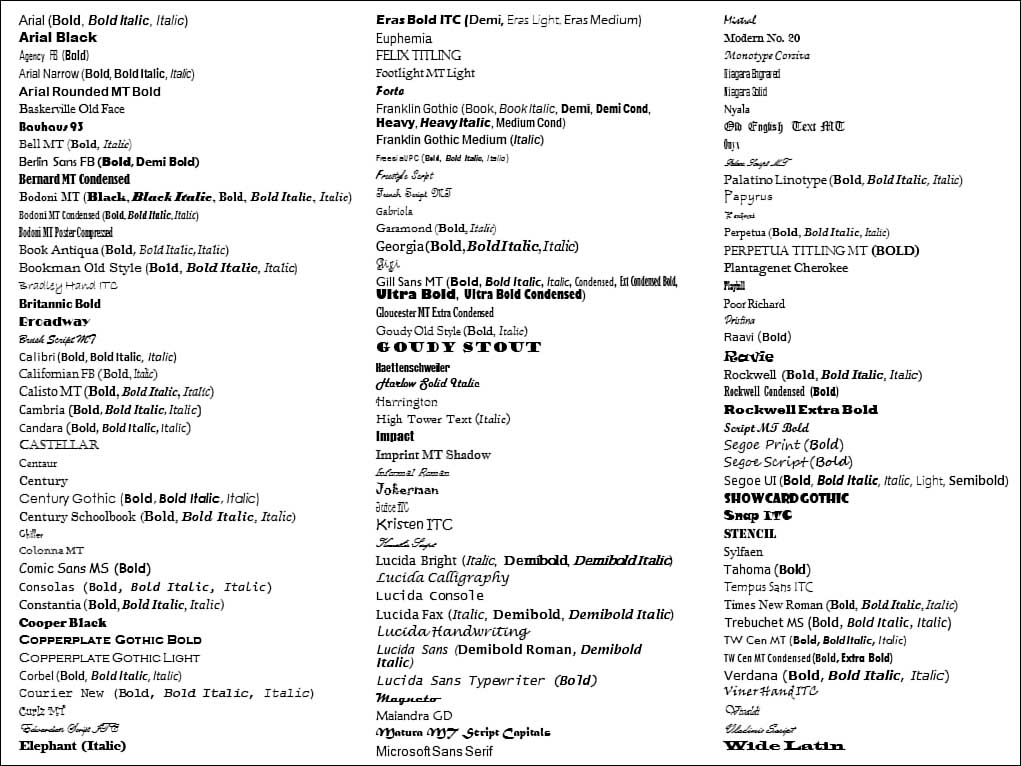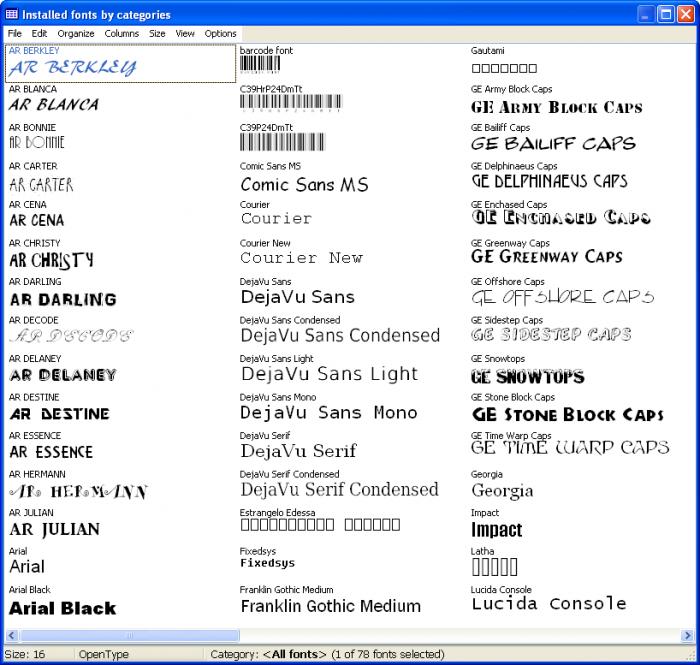

The worst thing that could happen is that your text may be unreadable with symbols and boxes substituting characters. This affects the layout and formatting of the document, so the number of pages might not be the same as the original and line and page breaks will not be where you intended them to be. If you share your documents with others and they don't have the same fonts on their system, Microsoft Word will substitute your font with another.

WebAIM has a guide on writing accessible Word documents.The fonts you use in a document determine how that document appears when viewed or printed.
MICROSOFT WORD FONTS FULL
Writing styleĪvoid the use of abbreviations which have not been given in full the first time they are used in the document.Īlso, avoid the use of particularly long sentences and use words and phrases that best suit your audience. Adding in contents and summaries can make longer documents easier to navigate. To ease accessibility (and usability) ensure all pages are numbered in the same place. If you are folding the document, to place it in an envelope for example, make sure the fold lines do not cross over text as this makes it unreadable to scanners or screen magnifiers. The Royal National Institute for the Blind recommend paper over 90 gsm. In addition, make sure the paper is thick enough that print from one side of the paper does not show through to the other side. Paper typeĪvoid glossy paper or laminated documents as these produce glare which can make them inaccessible. If you are creating a form the larger you make the response areas the better, as this will make the document more accessible to individuals with physical dexterity impairments. One line space at least should always be left between paragraphs. Line spacingĭouble or 1.5 spacing between lines can make a document more accessible. By aligning to the left you ensure the spaces between words are equal. Alignmentĭo not use justified text as this makes the spaces between words uneven which can make it difficult for some individuals to read. Some individuals may require printed documents on different coloured paper as this can assist those with dyslexia and other specific learning differences. Backgrounds should always be plain and ideally an off white/pastel shade. For example, black font on a cream or yellow background is a good contrast. It is important that there is sufficient contrast between the font colour and the background colour. Contrast and text colourįor the University it is usually best to use dark ink against a pale background as this is best for users with specific learning differences such as dyslexia, although some users with visual impairments may find a light font on a dark background easier. Wherever possible use bold to emphasise items or create headings as this is the most accessible type of formatting. 'Word Art' is not compatible with some screen readers.Īvoid the use of Italics and underlining wherever possible.Ĭontinuous text should not be in capitals, although a couple of words in capitals is acceptable. The more ornate the font, the fewer the number of individuals who will be able to read it. It is best to avoid the use of non sans-serif fonts, such as Times New Roman. However, it should be easy to provide the document in an alternative font size upon request.

Remember that no one font size will suit everyone. It is best practice to type word documents in font size 14, and no smaller than font size 12, to assist readers with visual impairments. Use the styles and formatting toolbar in Word when structuring your document as this will make it easier for disabled users to adapt the document to meet their needs and to navigate around the document if using a screen reader.
MICROSOFT WORD FONTS HOW TO
How to create a document tagline Styles and headings


 0 kommentar(er)
0 kommentar(er)
